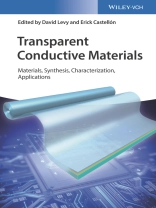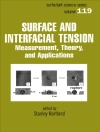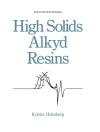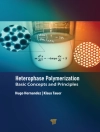Edited by well-known pioneers in the field, this handbook and ready reference provides a comprehensive overview of transparent conductive materials with a strong application focus.
Following an introduction to the materials and recent developments, subsequent chapters discuss the synthesis and characterization as well as the deposition techniques that are commonly used for energy harvesting and light emitting applications. Finally, the book concludes with a look at future technological advances.
All-encompassing and up-to-date, this interdisciplinary text runs the gamut from chemistry and materials science to engineering, from academia to industry, and from fundamental challenges to readily available applications.
Inhoudsopgave
Preface xi
Part I Electrical Conductive Materials: General Aspects 1
1.1 The Compromise Between Conductivity and Transparency 3
Alicia de Andrés, Félix Jiménez-Villacorta, and Carlos Prieto
1.1.1 Introduction 3
1.1.2 Relevant Parameters for Transparent Electrodes 5
1.1.2.1 Transmittance 5
1.1.2.2 Transmittance and Absorption Coefficient: Experimental Aspects 6
1.1.2.3 Electronic Transport Parameters 7
1.1.2.4 Figure of Merit 9
1.1.3 Spectroscopies 11
1.1.3.1 Raman and Infrared Spectroscopies 11
1.1.3.2 X-ray Absorption Spectroscopies 13
1.1.3.3 UPS and XPS 15
1.1.4 Transparent Conducting Materials 17
1.1.4.1 Oxide Electrodes: Amorphous Films 17
1.1.4.2 Metallic Nanowires and Grids 18
1.1.4.3 Graphene and Graphene Oxide 19
1.1.4.4 Graphene Doping with Atoms and Nanoparticles 21
1.1.5 Conclusions and Forecast 24
References 25
Part II Inorganic Conductive Materials 31
2.1 Metallic Oxides (ITO, Zn O, Sn O2, Ti O2) 33
Klaus Ellmer, Rainald Mientus, and Stefan Seeger
2.1.1 Introduction 33
2.1.2 Basic Bulk Properties 35
2.1.2.1 ITO 38
2.1.2.1.1 Crystallographic Structure 38
2.1.2.1.2 Electrical Properties 39
2.1.2.1.3 Optical Properties 40
2.1.2.2 Zn O 42
2.1.2.2.1 Crystallographic Structure 43
2.1.2.2.2 Electrical Properties 44
2.1.2.2.3 Optical Properties 46
2.1.2.3 Sn O2 47
2.1.2.3.1 Crystallographic Structure 48
2.1.2.3.2 Electrical Properties 48
2.1.2.3.3 Optical Properties 48
2.1.2.4 Ti O2 50
2.1.2.4.1 Crystallographic Structure 50
2.1.2.4.2 Electrical Properties 53
2.1.2.4.3 Optical Properties 55
2.1.3 Thin Film Properties 57
2.1.3.1 ITO 57
2.1.3.2 Zn O 59
2.1.3.3 Sn O2 60
2.1.3.4 Ti O2 63
2.1.4 Conclusions 67
References 68
2.2 Chemical Bath Depositio n 81
Peter Fuchs, Yaroslav E. Romanyuk, and Ayodhya N. Tiwari
2.2.1 Introduction 81
2.2.2 Principles of Chemical Bath Deposition 81
2.2.3 Material Examples 82
2.2.3.1 Zn O 82
2.2.3.2 Sn O2 90
2.2.3.3 In2O3 92
2.2.3.4 Cd O 93
2.2.4 Low-temperature Post-deposition Treatment 93
2.2.5 Implementation of CBD TCOs in Devices 94
2.2.6 Conclusions and Outlook 96
References 97
2.3 Metal Nanowires 105
Chao Chen and Changhui Ye
2.3.1 Synthesis of Metal Nanowires 108
2.3.2 Fabrication of Transparent Conductive Films on the Basis of Metal Nanowires 110
2.3.3 Patterning Metal Nanowire Transparent Conductive Films 112
2.3.4 Performance of Metal Nanowire Transparent Conductive Films 114
2.3.4.1 Transparency and Conductivity 115
2.3.4.2 Haze Factor 117
2.3.4.3 Color 119
2.3.4.4 Uniformity 120
2.3.4.5 Roughness 121
2.3.4.6 Adhesiveness 123
2.3.4.7 Stability 124
2.3.5 Concluding Remarks 126
References 127
Part III Organic Conductive Materials 133
3.1 Carbon Nanotubes 135
Félix Salazar-Bloise
3.1.1 Introduction 135
3.1.2 Some Simple Carbon Structures 136
3.1.3 Graphene in the Context of Nanotubes 137
3.1.4 Fundamentals of Nanotubes 142
3.1.4.1 Structure of Carbon Nanotubes 142
3.1.4.2 Electronic Properties of Carbon Nanotubes 146
3.1.5 Mechanical Properties 151
3.1.6 Thermal Properties 152
3.1.7 Some Techniques for Producing Nanotubes 155
3.1.7.1 Arc-discharge Method 155
3.1.7.2 Laser Ablation 156
3.1.7.3 Chemical Vapor Deposition (CVD) 156
References 156
3.2 Graphene 165
Judy Z.Wu
3.2.1 Introduction 165
3.2.2 Physical Properties of Intrinsic Graphene Transparent Conductors (GTCs) 167
3.2.3 Synthesis and Characterization of Graphene Transparent Conductors 169
3.2.3.1 Synthesis of Graphene 169
3.2.3.1.1 Solution Synthesis of Graphene 169
3.2.3.1.2 Chemical Vapor Deposition of Graphene on Metal Foils 170
3.2.3.1.3 Direct Growth of Graphene on Dielectric Substrates 171
3.2.3.2 Characterization of GTC Properties 174
3.2.3.3 GTC Interface with Other Materials in Heterostructures 175
3.2.3.3.1 Engineering Work Function of Graphene 175
3.2.3.3.2 Efficient Charge Transfer Across van der Waals Heterojunction Interface 176
3.2.4 Applications of Graphene Transparent Conductors 178
3.2.4.1 Photodetectors 178
3.2.4.2 Photovoltaics 180
3.2.4.2.1 Dye Sensitizer Solar Cells on GTC 180
3.2.4.2.2 Organic Solar Cells on GTC 181
3.2.4.2.3 Inorganic PV on GTC 182
3.2.4.3 Other Applications 182
3.2.5 Conclusion and Future Remarks 183
Acknowledgments 183
References 183
3.3 Transparent Conductive Polymers 193
Jose Abad and Javier Padilla
3.3.1 Introduction 193
3.3.1.1 About the Figure of Merit (Fo M) 194
3.3.2 Polyaniline (PANI) and Polypyrrole (PPy) 195
3.3.2.1 Polyaniline (PANI) 196
3.3.2.2 Polypyrrole (PPy) 198
3.3.2.3 Other Polymers 198
3.3.3 Poly(3, 4-dioxythiophene)–PEDOT 200
3.3.3.1 Oxidative Polymerization 200
3.3.3.2 In Situ Polymerization 200
3.3.3.3 Vapor-phase Polymerization (VPP) 201
3.3.3.4 Oxidative Chemical Vapor Deposition (o-CVD) 201
3.3.3.5 Electrochemical Polymerization 201
3.3.4 PEDOT:PSS 202
3.3.4.1 Solvents and Additives 203
3.3.4.2 Acids 204
3.3.4.3 Salts, Ionic Liquids, and Zwitterions 204
3.3.4.4 Other Approaches 207
3.3.4.5 PSS Substitution 207
3.3.5 Polymer–Metal Composites 208
3.3.5.1 Ag Grid/PEDOT:PSS 208
3.3.5.2 Ag NW/PEDOT:PSS 210
3.3.5.3 Other Film Composites 212
3.3.6 Carbon-based Composites 212
3.3.6.1 Carbon Nanotubes (CNTs) 213
3.3.6.2 Graphene Oxide (GO) and Graphene (G) 215
3.3.7 Applications 216
3.3.8 Summary and Perspectives 217
References 219
Part IV Characterization of Transparent Conductive Films 245
4.1 Characterizations of Electrical Properties by the van der Pauw Method 247
Yuichi Sato and Toru Matsumura
4.1.1 Introduction 247
4.1.2 Measurements of Electrical Properties by the van der Pauw Method 248
4.1.3 Effects of Positions, Sizes, and Shapes of the Electrical Contacts Mounted on Various Shapes of Measuring Samples on the van der Pauw Measurement Values 249
4.1.3.1 Effect of Positions and Sizes of the Electrical Contacts Mounted on a Circular Shape Measuring Sample 249
4.1.3.2 Effects of Conditions of the Electrical Contacts in Square-shaped Measuring Samples 250
4.1.4 Effect of Inhomogeneity Existing in Measuring Samples on the van der Pauw Measurement Values 252
4.1.4.1 Estimations of Errors in the van der Pauw Measurement Values Concerning Inhomogeneous Materials 254
4.1.4.2 Incorrect Determinations of the Carrier Type in the van der Pauw Measurements of Inhomogeneous Zn O 259
4.1.5 Conclusions 260
References 261
Part V Applications 263
5.1 Electrochromic Oxide-based Materials and Devices for Glazing in Energy-efficient Buildings 265
Claes G. Granqvist
5.1.1 Introduction 265
5.1.2 Characterization of Optical Properties 267
5.1.3 Functional Principles and Materials 268
5.1.4 The Role of Nanostructure 270
5.1.5 Optical Properties 272
5.1.6 Case Study: Flexible Electrochromic Foil 275
5.1.7 Recent Development: Durability Assessment and Rejuvenation of Electrochromic Thin Films 282
5.1.8 Some Conclusions and Perspectives 285
References 286
5.2 Transparent Electrodes for Organic Light-emitting Diodes 301
Shigeki Naka
5.2.1 Introduction 301
5.2.2 Transparent Electrodes for Anode 303
5.2.3 Conducting Polymers 304
5.2.4 Dielectric/Metal/Dielectric Electrodes 304
5.2.5 Buffer Layer for Anode 308
5.2.6 Transparent Electrodes for Cathode 309
5.2.7 Buffer Layer for Cathode 310
5.2.8 Carrier Injection at Organic/Electrode Interface 311
5.2.9 Issue of Transparent Electrode for OLEDs 312
5.2.10 Conclusions 314
References 314
5.3 Dye-sensitized Devices: Photovoltaic and Photoelectrolytic Applications 317
José A. Solera-Rojas, Marisol Ledezma-Gairaud, and Leslie W. Pineda
5.3.1 Introduction 317
5.3.2 Properties of Titanium Dioxide 319
5.3.2.1 Structural Properties 319
5.3.2.2 Electronic Considerations 320
5.3.2.3 Optical Features 322
5.3.3 Surface Modification of Ti O2 323
5.3.3.1 Chemical Modifications 324
5.3.3.1.1 Doping 324
5.3.3.1.2 Chemical Modification at the Ti O2 Surface 324
5.3.3.1.3 Organometallic Dyes for Sensitization 324
5.3.4 Bridge-like Molecules to Immobilize Sensitizer Molecules in Nanoparticulate Ti O2 326
5.3.5 Applications for the Development of Photoelectrochemical Cells in Water Oxidation Reaction 329
5.3.6 Concluding Remarks 331
Acknowledgments 331
References 332
5.4 Smart Windows Based on Liquid Crystal Dispersions 337
Erick Castellón and David Levy
5.4.1 Introduction 337
5.4.2 Liquid Crystals 337
5.4.3 Liquid Crystal Dispersion Materials as Smart-window Devices 342
5.4.4 Parameters of Electrooptical Performance in LC-dispersion-based Smart Windows 345
5.4.5 Polymer-dispersed Liquid Crystals 346
5.4.5.1 Colloidal Method 347
5.4.5.2 Solvent-induced Phase Separation 348
5.4.5.3 Temperature-induced Phase Separation 348
5.4.5.4 Polymerization-induced Phase Separation 348
5.4.6 Polymer-stabilized Liquid Crystals 351
5.4.7 Gel-glass-dispersed Liquid Crystals 352
5.4.7.1 Sol–Gel Chemistry 352
5.4.7.2 Liquid Crystal Dispersions in Sol–Gel Materials 353
5.4.8 Other Liquid Crystal-dispersion Devices 355
5.4.9 Conclusion 356
References 357
Concluding Remarks 367
Castellón Erick and David Levy
Index 369
Over de auteur
David Levy is research professor and head of the Sol-Gel Group at the Materials Science Institute of Madrid (ICMM) of the Consejo Superior de Investigaciones Cientificas. His research interests are optical materials, liquid crystal materials, Sol-Gel processing and their applications. During his time at The Hebrew University of Jerusalem David Levy pioneered the sol-gel process for the preparation of organically doped silica-gel glasses. He has more than 130 publications and a number of patents to his name and has received numerous prizes in recognition of his work on sol-gel materials, including the First Ulrich Prize and the nomination to King Juan Carlos-I research award. David Levy also headed the LINES of the National Institute of Aerospace Technology, INTA, where he developed space materials, instrumentation and micro/nanotechnologies for space to be implemented on the board of a satellite.
Erick Castellon is professor and researcher in physical and materials chemistry at School of Chemistry and Centre for Materials Science and Engineering (CICIMA), University of Costa Rica. He obtained his Ph D in 2011 at the Autonomous University of Madrid, Spain, performing his research in the Institute of Materials Science in Madrid under the advice of David Levy and Marcos Zayat. His main research interests include chemistry of materials with photonic applications, liquid crystals and porous materials with emphasis on hybrid organic-inorganic materials obtained by the sol-gel technique.












